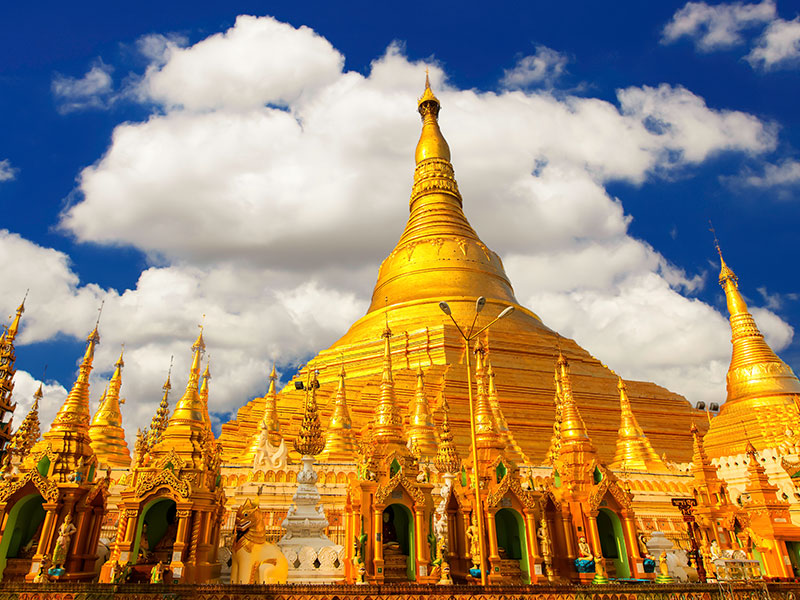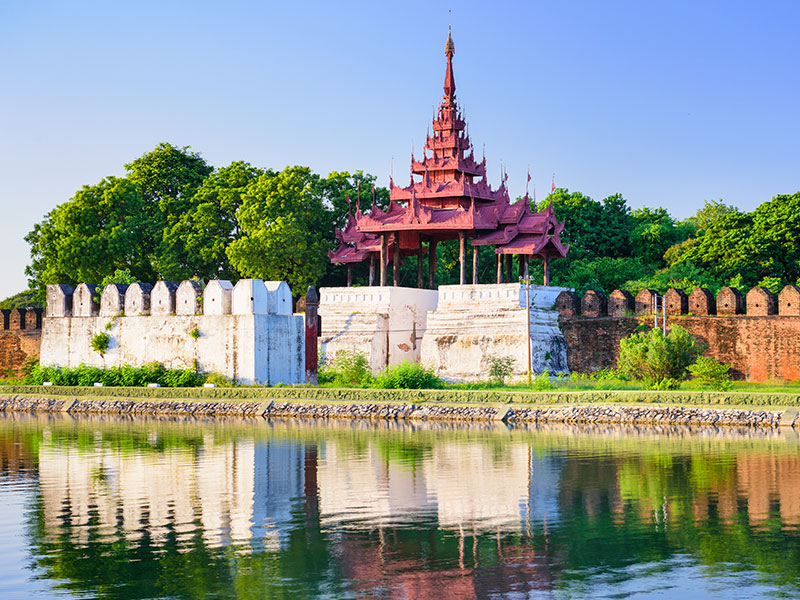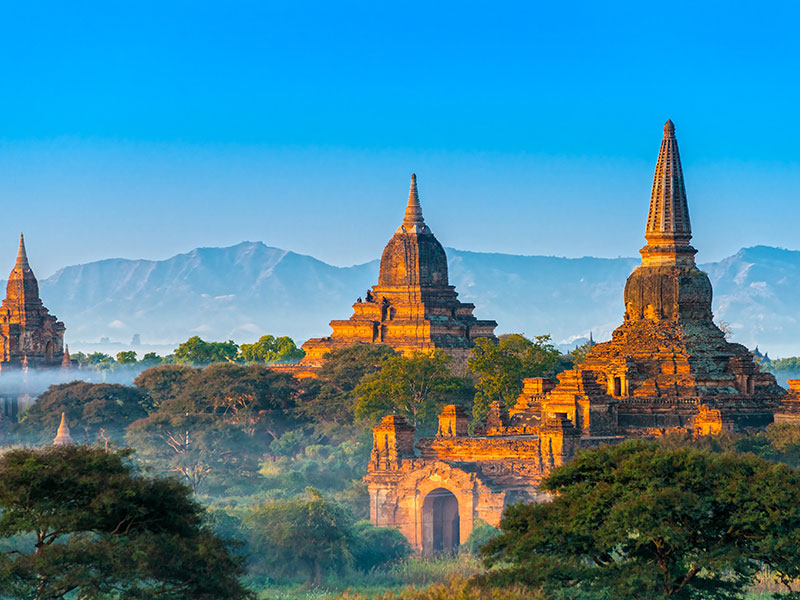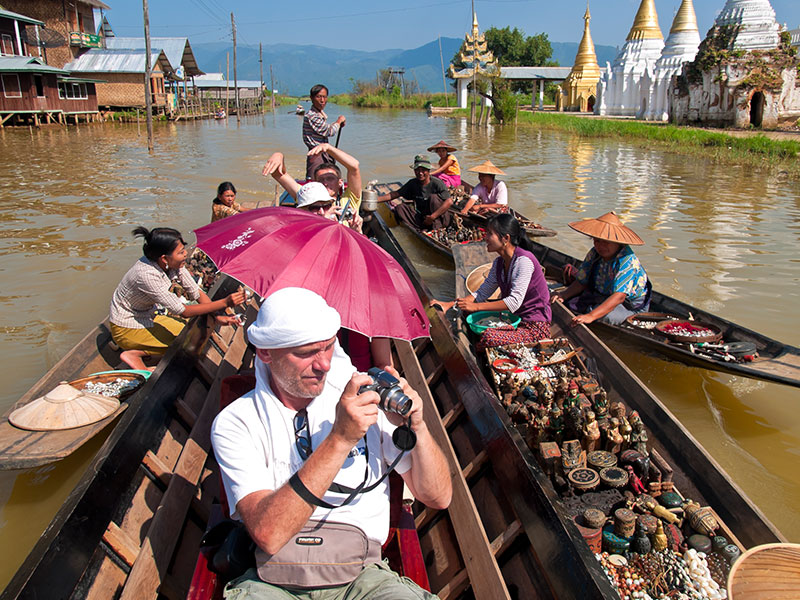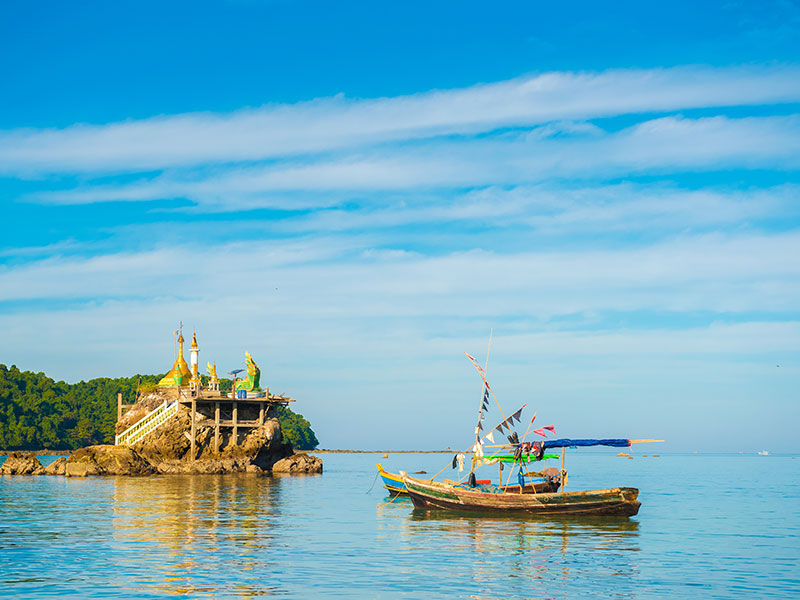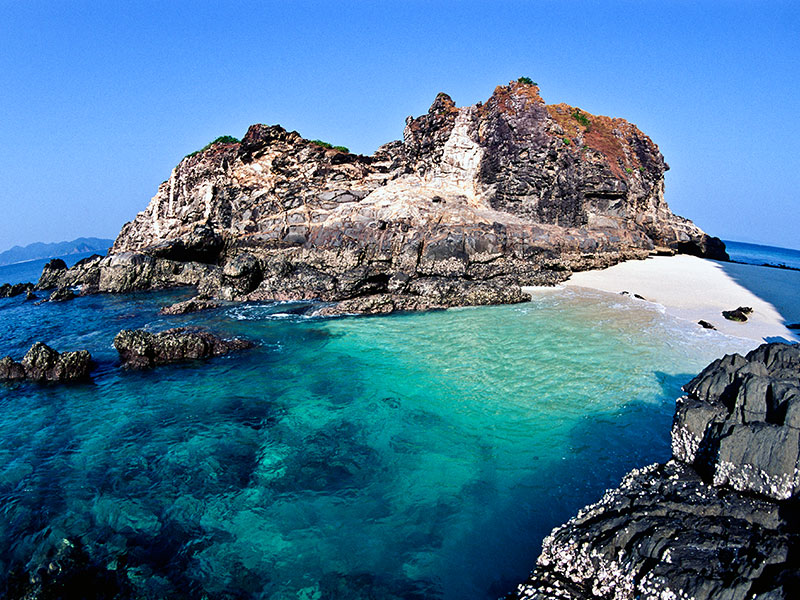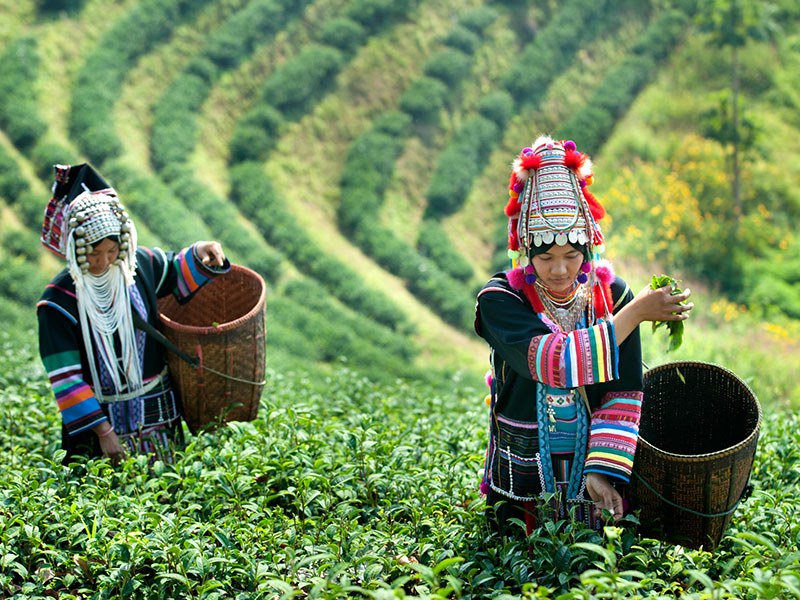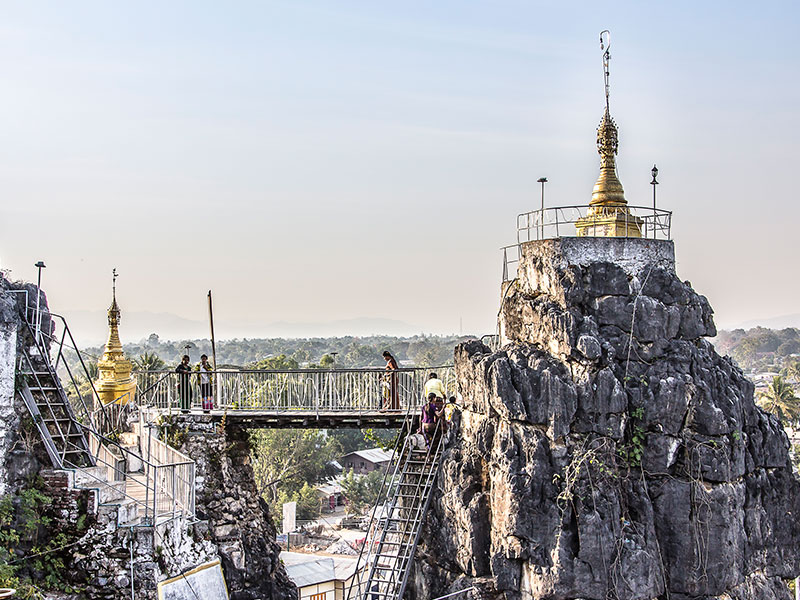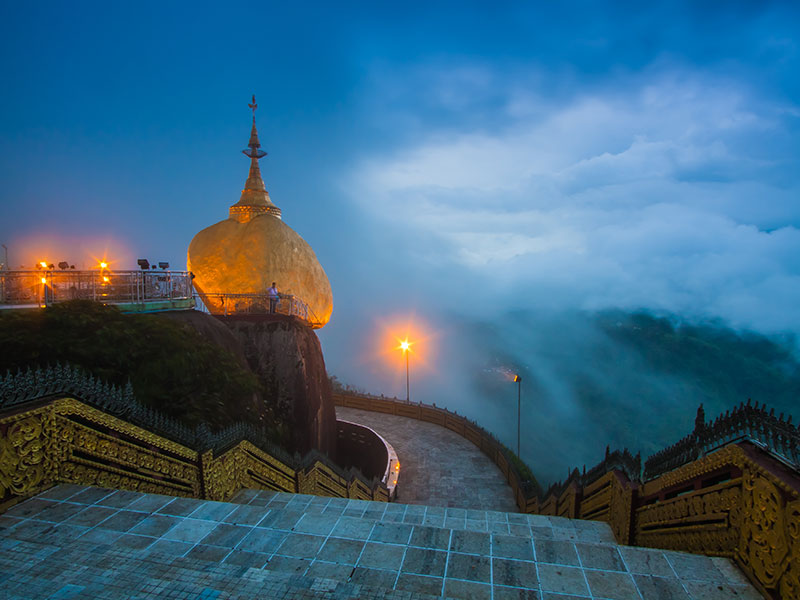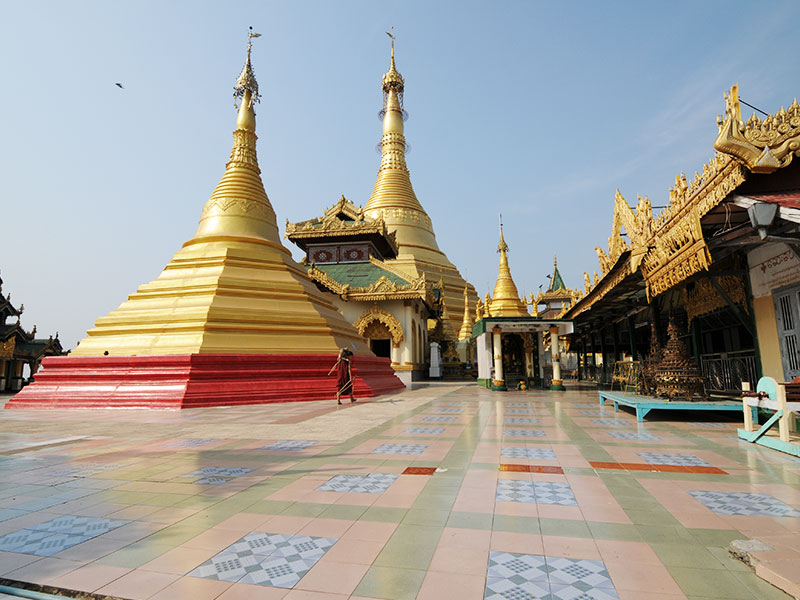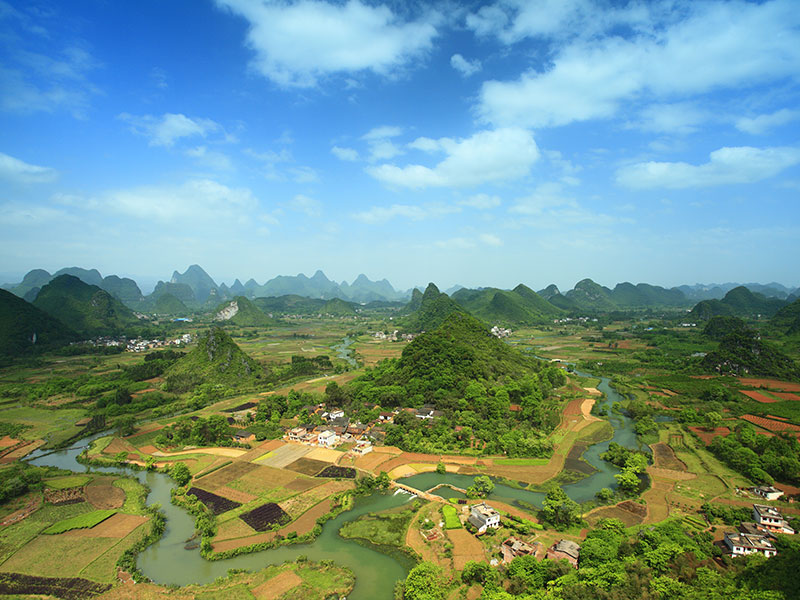Bagan
Bagan
“He who has not visited Bagan has not visited Myanmar yet.”
Bagan was the first imperial capital of ancient Myanmar. The end of the 13th century witnessed the fall of Bagan dynasty in the reign of King Narathihapate or King Tayotpaye. Bagan had been ruled over by 55 kings 12th century. The ruins of Bagan cover a tract of country, measuring about 16 square miles along the east bank of mighty Ayeyarwady. The monuments which are now in all stages of decay were erected mostly from the 11th – 13th centuries AD, during which Bagan was in its heydays. Nowadays, Bagan is the ideal site for historical, cultural and archaeological studies.
True! Myanmar people used to say regarding Bagan of which they are much proud. Bagan is the cradle of Myanmar history and Buddhist culture. King Thamudrit built Bagan at the very place of the settlement called Paukkan. The mighty King Anawrahta (1044-77) welded into one kingdom a group of formerly independent states and became king of the Ayeyarwady River in the 11th century. He extended his sovereignty down to the south. He was the first unifier of Myanmar and the introducer of the Theravada Buddhism in Myanmar. The air of Bagan is filled not only with the fragrance of vachellia, but also with war-cries of spear-slinging heroes on horsebacks. The study of the history and culture of Began means the study of the history and culture of Myanmar. Thanks to the good irrigation system of Bagan kings, the wealth of Bagan increased rapidly and the people of Bagan erected about 10,000 pagodas and temples in Bagan area. But today they are ruined except some famous pagodas and temples. However, Bagan succumbed to the onslaught of the Mongols in 1287, and Myanmar split up into small principalities.
Bagan period was the period of affluence, creativity and glory—- the period the rained gold and sliver, as Myanmar people usually put it. It was a period like that of the renaissance period in Italy.”
Around Bagan
Mt. Popa (Table Mountain)
Popa is a Pali words, which means flower, hence the mountain of flowers. It is about 5,000 feet high and about 30 miles by car from Bagan.
Your trip to Bagan is not complete without an excursion to Mt. Popa, some km by car from Bagan on your way to Mandalay. It is at the foot of the Mt. Popa, an extinct volcano. But now it is clad with lush and green forests with waterfalls. You can see Champac flowers sold in bottles. Popa area is the oasis in the arid central Myanmar or the Dry Zone. It is well-managed by the Forest Department. It is very fun to climb the Mountain table, where there are some necromancers predicting with the help of spirits the horoscopes of the clients. On route, you will pass through Meikhtila city, which is famous for the magnificent Meikhtila Lake.
Salay
Salay is 36km south of Bagan. It was developed in late 12th and 13th century. There are many religious centre than Bagan. Among these religious monuments, Yougson Kyaung is the oldest surviving wooden monastery in Bagan era and Nan Paya is a large lacquer Buddhist image in Myanmar. In Yougson monastery museum, the three dimensional wood carving of 19th century is incomparable in Myanmar. The two-story colonial building and Thdanayaunggyi monastery are also very interesting places in Salay. Salay is also famous for Bagan Era writer, U Ponga. His monastery and libraries are still originally. Near U Ponga monastery compound, an interconnected complex of three brick shines, Payathonzu is noted for 19th century well painting. Salay is one of the religious and historical sites in Myanmar.
OTHER DESTINATIONS

Quick Links
- About Us
- Social Responsibility
- MICE Tour
- Popular Tour
- Our Local Events
- Discover Myanmar
Let's get contact
To get in touch with us about any enquiry, suggestions or information, fill out this form or email [email protected]
Newsletter
- Careers
- Terms and conditions
- Privacy Policy
We accept payment by:


